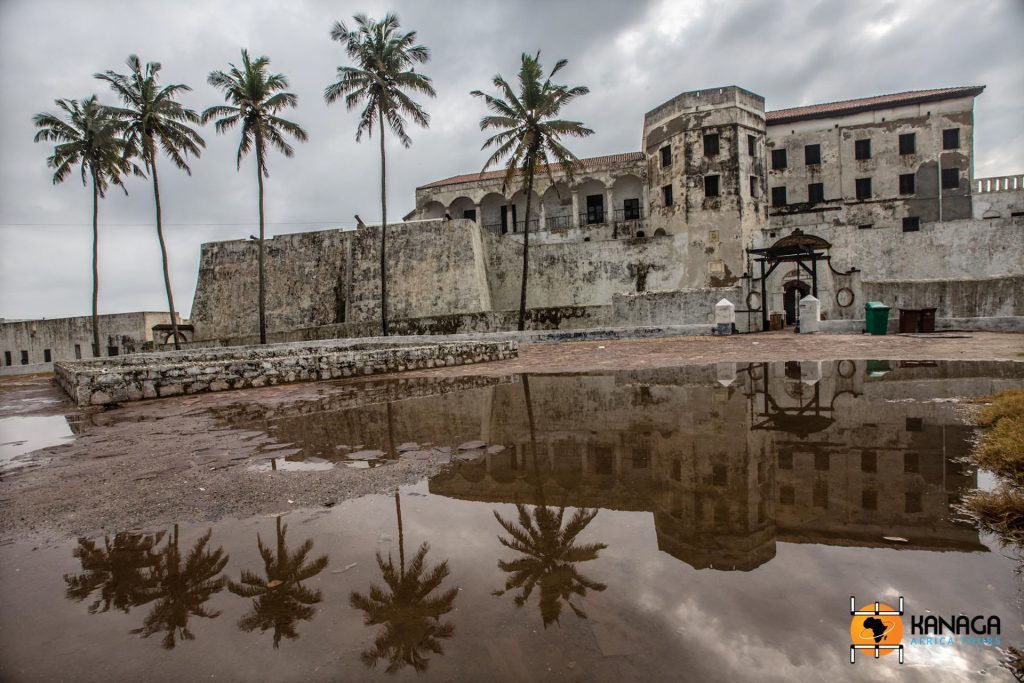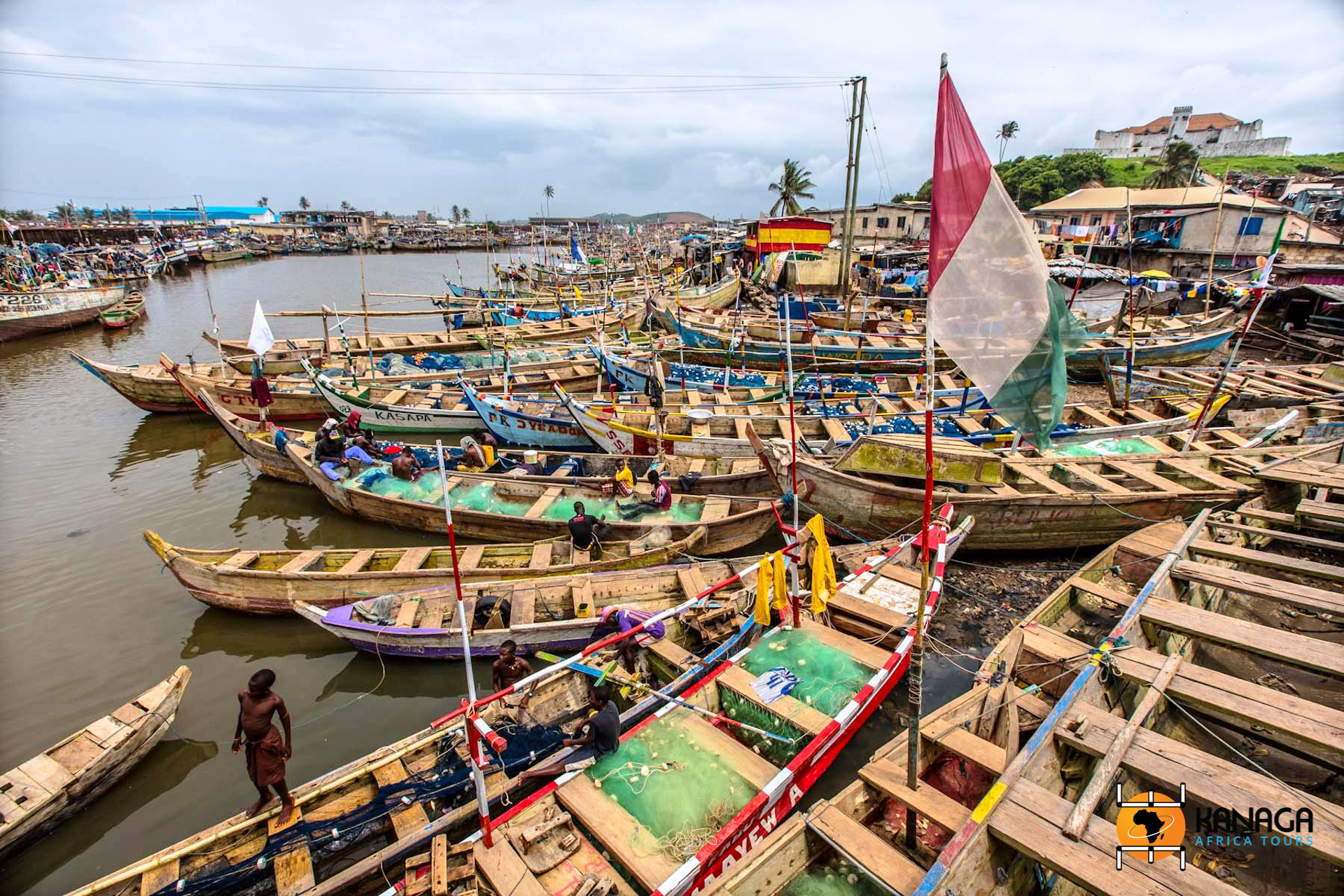© A. Pappone
15 km from Cape Coast is Elmina. Situated on an isthmus between the waters of the Atlantic Ocean and Benya Lagoon, its harbour is one of the most picturesque in Ghana. Its main attractions are the ancient Posuban (voodoo shrines) of the infantrymen and St George‘s Castle.
The St. Georges Castle/Fortress, a UNESCO World Heritage Site, is the oldest European building edified in Sub-Saharan Africa. Built by the Portuguese in 1482, on the promontory overlooking the city and its mouth, it was conquered and remodelled in 1637 by the Dutch, who made it the headquarters in Africa of the Dutch East India Company until 1872, the date of its conquest by the British Crown. Its dungeons were first used as warehouses for gold, then converted into cells and sheds for slaves. It was here that the Ashanti king, Prempeh I, was held prisoner for four years before being sent into exile. Square in plan, surrounded by a moat and four watchtowers with loopholes, it was designed to be self-sufficient inside, with wells for water supply, flats for the governors, cells and prisons for enemies and slaves, spaces for training soldiers and even churches, which were reconsecrated according to the religious faith of those who took possession of them (Catholic under the Portuguese, Protestant under the Dutch and finally Anglican under the British).
Today the moat surrounding it is dry and strewn with palm trees, while on the opposite banks of the lagoon, the smaller St. Jago fortress, built by the Dutch in 1652, is abandoned and no longer has any reason to protect this now museumised complex. The view from here is superb, overlooking the bustling bustle of pirogues unloading fish in front of the wooden fish market stalls. A multitude of women gather to negotiate with the fante fishermen’s cooperatives, buying the freshly unloaded fish and selling it on the stalls or in huge wicker baskets. The market area is also the site of the Bakatue Festival, linked to the marine world of the Fante people and their voodoo spirituality, of which the small Posubans (Sanctuaries) along the main street are the symbol.







